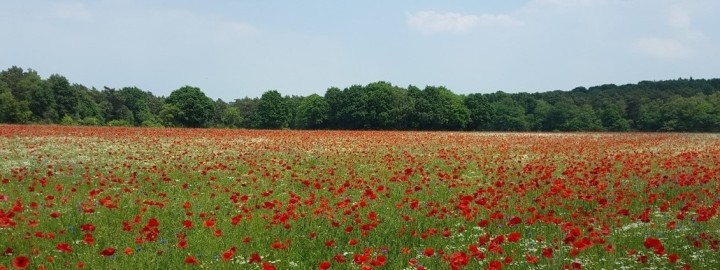IMPACT COMPENSATION

We minimise the impact on nature and the landscape during the grid expansion. Unavoidable interventions are compensated in other areas, as stipulated by the Federal Nature Conservation Act. However, our measures go beyond the legal requirements: as a pioneer of the climate-neutral energy system, we see nature conservation as part of our corporate mission.
WESEL ON THE LOWER RHINE
In 2018, Amprion acquired an area of around 19 hectares in Dinslaken (Wesel) for the construction of the power line project from Wesel to Utfort (Moers). The land, which had previously been drained and used intensively for arable farming, was redesigned as part of an eco-account*. This included the asset of a meadow orchard, the reforestation of a climate-resistant mixed oak-hornbeam forest and the sowing of a site-appropriate grassland mixture that is typical of the region and has a high proportion of insect-friendly perennials.
Avoiding chemical weed control and artificial nutrient inputs is the top priority here. The aim is to maintain a high level of biodiversity and counteract nitrogen deposition into the soil and the neighbouring watercourse.
Another part of this project is located in Wesel-Obrighoven on an area of around three hectares, part of which belongs to a fauna-flora habitat area (FFH area). FFH areas are protected areas that serve to protect habitat types in accordance with the EU Directive. Together with the European bird sanctuaries, they form the Natura 2000 network.
Here, old forest stands are taken out of conventional forestry utilisation in order to increase the proportion of deadwood and the potential for hollow trees. Both areas generate around 900,000 ecopoints**.